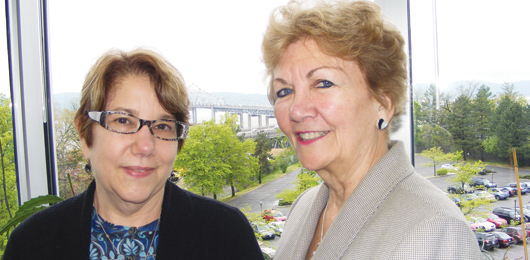Health home shows promise in Westchester

Officials at Hudson Health Plan in Tarrytown plan to use their recent award-winning, three-year project with chronically ill and down-and-out Medicaid patients as a model for a “health home” being formed by a coalition of Westchester County health care providers to better serve more Medicaid patients at reduced costs.
The federal Patient Protection and Affordable Care Act allows states to form health homes to coordinate physical health care, behavioral care and social services for Medicaid recipients. Hudson Health Plan is working with several health care providers and agencies to launch the Hudson Valley Cares Coalition, one of two health homes being formed in Westchester County, said Georganne Chapin, Hudson Health Plan president and CEO.
In the Medicaid program, “Too often the structural barriers, the eligibility rules, even the confidentiality rules, can get in the way of getting people the services they need,” Chapin said. “This should be all about getting the right services to the people who need them.” The Westchester Cares Action Program, which this spring received the 2012 Distinguished Public Health Service Award from Westchester County officials, “was a tremendous first step in that direction.”
A nonprofit provider of state-sponsored Medicaid Managed Care, Child Health Plus and Family Health Plus insurance plans to about 115,000 people in Westchester and the Hudson Valley region, Hudson Health Plan and its behavioral care partner, Beacon Health Strategies, in 2009 developed the Westchester Cares Action Program as a new model for integrated health care coordination. It was one of seven chronic illness demonstration projects around the state selected by the state Health Department.
The projects were to manage the care of persons who are high users of health care services ”“ often starting with emergency room visits and resulting in costly hospitalizations ”“ that are billed directly to the state Medicaid office. Many of the patients”™ physical illnesses are compounded by mental illness, drug and alcohol addictions and homelessness.
State officials gave the WCAP”™s organizers a target goal of enrolling 250 sick and poor Medicaid patients. “They sent us lists of people to find,” said Margaret Leonard, senior vice president of critical services at Hudson Health Plan and executive director of WCAP.
Finding and enrolling them was expected to take two months, Leonard said. “In reality, it took us almost 18 months to find the 250 people.” About 40 percent of the targeted population was homeless.
“That”™s why our community partners became so important,” Leonard said. WCAP”™s eight-member staff relied on contacts at homeless shelters, soup kitchens, hospital emergency rooms and health centers to help locate people. The Westchester project was the only one in the state that met its enrollment goal, she said.
Maintaining enrollment numbers also proved difficult. Many beneficiaries were deemed ineligible for the Medicaid program in the course of the project, which ended in March.
Chapin estimated about 500 people in all were enrolled at various times “in order to remain at 250” through the project. “The churning is due to arcane and impenetrable eligibility rules,” she said.
WCAP employed a team of nurse case managers, behavioral health specialists and social workers to coordinate a patient”™s care. Chapin said WCAP was allowed to provide services ”“ such as providing an escort to assist clients on shopping trips and at medical appointments ”“ that normally cannot be billed to Medicaid.
The project care team also included a peer support specialist, who had been in the welfare system and had survived the poverty, homelessness, chronic illness and substance abuse that afflicted persons in the project.
“The peer specialist was key” to the project”™s success, Chapin said. “You name the scenario, she had lived it.”
Though the state still is compiling data from the Westchester project, Hudson Health Plan officials said their own preliminary data show the health home model works.
Examining the cases of 61 who were in WCAP for at least two years, they found the project saved the state more than $750,000 through hospital admissions that were avoided. Inpatient costs were reduced by nearly 46 percent and inpatient admissions by nearly 45 percent. Emergency room visits were reduced by more than 15 percent.
Leonard said enrollees in the recently ended WCAP project are eligible to enroll in Medicaid managed care and will be eligible too for the new health home program.
As an incentive to states, Leonard said, the federal government currently will pay 90 percent of Medicaid care costs for health home enrollees, compared with its standard 50 percent reimbursement to states.
In Westchester, “We think it”™s immensely encouraging that we have a coalition” willing to cooperate in a health home, said Chapin. Those care providers often compete for Medicaid patients and the Medicaid revenue that follows from the state.
“There”™s a terrific battle over who these patients belong to,” Chapin said. “That”™s survival for these entities, but it”™s not always beneficial for the patients.”
“This could work,”™ Leonard said of the health home system. “This could really work.”